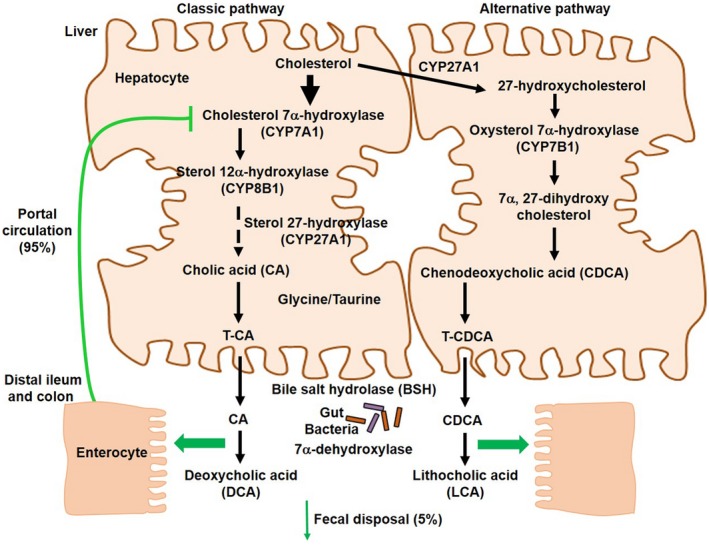Figure 1.

Bile acid synthesis. Bile acids are synthesized from cholesterol in the liver. A total of 17 enzymes located in the cytosol, endoplasmic reticulum, mitochondria, and peroxisomes of hepatocytes are involved in bile acid synthesis. The classic pathway is initiated by the rate‐limiting enzyme, CYP7A1, to synthesize the two primary bile acids in humans, CA and CDCA. CYP8B1 is required for CA synthesis, and mitochondrial CYP27A1 catalyzes a steroid side‐chain oxidation. The alternative pathway is initiated by CYP27A1, followed by CYP7B1. A common precursor of CA and CDCA, C4, is used as a serum marker for bile acid synthesis rate. After synthesis, bile acids are conjugated to the amino acids taurine or glycine for biliary secretion. In the distal ileum and colon, gut bacterial BSH deconjugates the conjugated bile acids, and bacterial 7α‐dehydroxylase removes the 7α‐hydroxyl group to convert CA and CDCA to the secondary bile acids DCA and LCA, respectively. The classic pathway is the major pathway for daily synthesis of about 80% of the bile acids in humans, whereas the alternative pathway synthesizes about 20%. Most bile acids (~95%) are reabsorbed in the ileum and transported via portal blood to the liver to inhibit bile acid synthesis. A small amount of bile acids (~5%) lost in feces is replenished by de novo synthesis.
